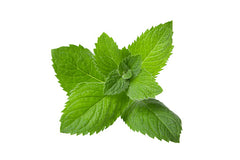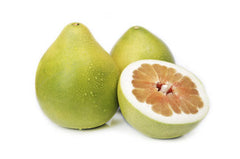What Does Wood Smell Like?
Click For Affordable Inspired Perfume Alternatives

Embark on a sensory journey into the heart of nature and explore the enchanting aroma of wood. A timeless and diverse fragrance, wood evokes the essence of forests, craftsmanship, and warmth. Join us as we delve into the question: What does wood smell like?
What Does Wood Smell Like?
The scent of wood is a complex symphony that captures the very soul of nature. Imagine the rich, earthy aroma of a forest after rain, the comforting scent of aged wooden furniture, and the warm embrace of a crackling fireplace. Wood's fragrance is a celebration of the natural world, offering a grounding and comforting olfactory experience.
Earthy Harmony: A Forest Floor
As you approach the scent of wood, the first olfactory impression is an earthy harmony reminiscent of a forest floor. Picture the damp soil, fallen leaves, and the subtle sweetness of decomposing wood. Wood's fragrance transports you to the heart of a dense woodland, where the scent of earth and nature intertwine in a comforting embrace.
Woody Warmth: A Cozy Fireplace
The scent of wood carries a distinct warmth, akin to the comforting ambiance of a crackling fireplace. It evokes images of cozy cabins, log fires, and the intimate gatherings of loved ones. Wood's fragrance is an invitation to embrace the cozy and familiar, providing a sense of security and tranquility.
Sensual Resin: A Touch of Sweetness
While predominantly earthy, there's often a touch of sweetness in wood's scent, reminiscent of resinous notes. This subtle sweetness adds depth to the fragrance, creating a well-balanced composition that is both grounding and intriguing. Wood's aroma is a delightful interplay of earthiness and resinous warmth, reminiscent of the resinous sap found within its fibers.
Timeless Elegance: Aged Wood
Delve deeper into the scent, and you may encounter the timeless elegance of aged wood. The fragrance carries the character of weathered and seasoned wood, telling the story of years gone by. It's as if the aroma encapsulates the history and craftsmanship ingrained in every fiber.
Woody Symphony
Hence, wood's fragrance is a symphony of earthy harmony, woody warmth, sensual resin, and timeless elegance. It stands as a testament to the natural beauty and versatility of this enduring olfactory gem, offering a sensory experience that is both grounding and sophisticated. Wood, with its comforting and complex aroma, invites us to connect with the essence of the great outdoors, a fragrant journey that unfolds with every inhalation.
Factors Influencing the Scent of Wood Fragrance Oil
Wood fragrance oil is a carefully crafted composition designed to capture the diverse and evocative scent of various wood types. The formulation of this fragrance involves a thoughtful combination of aromatic compounds. Here are several factors that contribute to the rich and nuanced scent of wood fragrance oil:
-
Fragrance Composition: Wood fragrance oil is a meticulously blended mixture of various aromatic compounds, chosen to replicate the characteristic scent of wood. This composition may include both synthetic and natural ingredients to achieve the desired olfactory profile.
-
Wood Type: Different wood types, such as cedarwood, sandalwood, or oak, have distinct aromatic profiles. The choice of wood type significantly influences the overall fragrance, ranging from earthy and robust to sweet and resinous.
-
Synthetic vs. Natural Components: Wood fragrance oil often combines both synthetic and natural ingredients. Perfumers make choices to strike a balance between authenticity, cost considerations, and sustainability in the selection of these components.
-
Extraction Method: The method used to create wood fragrance oil, whether through distillation, extraction, or synthesis, plays a crucial role in defining the aromatic profile. Specific extraction methods contribute to the faithful recreation of the fresh and natural scent of wood.
-
Additional Notes in the Blend: The fragrance may incorporate additional notes, such as moss, musk, or herbal elements, to enhance complexity. These complementary notes contribute to the overall richness of the scent, capturing the essence of wood.
-
Quality of Ingredients: The quality of raw materials, including the source of essential components, directly influences the authenticity of the wood scent in the fragrance oil.
-
Perfumer's Artistry: The expertise and creativity of the perfumer or fragrance creator are crucial. Perfumers leverage their skills to balance different components, creating a distinctive and delightful wood fragrance.
-
Regulatory Compliance: Adherence to regulatory standards and restrictions on certain fragrance ingredients is crucial. Compliance with safety guidelines requires careful consideration of ingredient choices to ensure the fragrance is safe for use.
-
Usage in Products: Wood fragrance oil can be incorporated into various products, including perfumes, candles, room sprays, and bath products. The interaction with other ingredients in specific product formulations can influence how the wood scent is perceived.
-
Product Type and Concentration: The concentration of wood fragrance oil in a product affects the strength and longevity of the scent. Higher concentrations may be suitable for perfumes, while lower concentrations work well for candles, soaps, or room sprays.
-
Storage Conditions: Proper storage conditions for wood fragrance oil, both before and after formulation, are essential to maintain its stability and scent. Storing it in a cool, dark environment helps preserve the freshness of the fragrance.
-
Consumer Preferences and Trends: Formulations of wood fragrance may adapt to changing consumer preferences and market trends. The popularity of woody scents or unique blends may influence product formulations.
-
Artisanal vs. Commercial Production: Differences between artisanal and commercial production of wood fragrance oil may impact ingredient sourcing, formulation, and overall quality. Artisanal methods may emphasize craftsmanship and unique blends.
-
Post-Formulation Processing: Additional processes, such as aging or filtering after the formulation of the fragrance oil, may influence the final scent and contribute to the desired characteristics.
Exploring different formulations of wood fragrance oil allows consumers to experience a range of earthy, warm, and comforting scents reminiscent of the natural world. Individual preferences play a significant role in selecting the perfect wood fragrance for various applications.
What to Look for When Choosing Wood Fragrance Oil
Selecting a wood fragrance oil allows you to bring the timeless and comforting aroma of wood into your living spaces. Whether used in candles, diffusers, or personal care products, consider these factors to ensure you choose a high-quality and authentic wood fragrance oil:
-
Wood Type Authenticity: Seek a wood fragrance oil that authentically captures the specific type of wood you desire, whether it's cedarwood, sandalwood, oak, or others. Look for a fragrance that embodies the unique characteristics of quality wood.
-
Natural vs. Synthetic: Determine whether the fragrance oil is derived from natural sources or is synthetically produced. Natural wood oils can provide a more nuanced and realistic scent, closely resembling the aroma of actual wood.
-
Blend Ingredients: Check the blend of ingredients in the fragrance oil. A well-crafted combination of natural and synthetic components can contribute to a balanced and long-lasting wood fragrance.
-
Intensity Level: Consider the intensity level of the wood fragrance. Some may prefer a subtle and earthy scent, while others may desire a more pronounced and comforting aroma. Look for a fragrance that aligns with your desired level of intensity.
-
Versatility: Choose a fragrance oil that is versatile and suitable for various applications. Whether used in candles, soaps, lotions, or diffusers, versatility allows you to enjoy the woody scent in different settings.
-
Packaging: Assess the packaging of the fragrance oil. Opt for a bottle that is dark or opaque to protect the oil from light exposure, preserving its freshness and preventing deterioration over time.
-
No Residue or Discoloration: Ensure that the wood fragrance oil leaves no residue or discoloration when incorporated into different products. A high-quality oil should seamlessly integrate into various mediums without causing unwanted effects.
-
Manufacturer Reputation: Research the reputation of the manufacturer or brand. Choose well-established brands with positive reviews, as they are more likely to produce reliable and high-quality fragrance oils.
-
Testing Options: Look for fragrance oils that offer testing options or sample sizes. This allows you to experience the scent firsthand before committing to a larger quantity, ensuring it aligns with your preferences.
-
Ethical and Sustainable Practices: Consider the manufacturer's commitment to ethical and sustainable practices. Brands that prioritize responsible sourcing and environmentally friendly production contribute to a more conscientious choice.
By considering these factors, you'll be better equipped to choose a wood fragrance oil that not only aligns with your preferences but also ensures a high-quality and comforting olfactory experience in your chosen applications.
Where to Find Reputable Wood Fragrance Oils
Discovering a high-quality wood fragrance oil adds a touch of nature's warmth to your surroundings. Explore these sources to find reputable options for your wood-inspired olfactory journey:
-
Specialty Candle and Soap Supply Stores: Specialty stores dedicated to candle-making and soap supplies often carry a variety of fragrance oils, including a diverse selection of wood scents. These stores may offer options suitable for crafting candles, soaps, and other scented products.
-
Online Fragrance Oil Retailers: Browse reputable online platforms specializing in fragrance oils. Websites and retailers dedicated to aromatherapy, candle making, or DIY crafting may have an extensive selection of wood fragrance oils. Check product descriptions and customer reviews for authenticity and quality.
-
Artisanal or Handmade Markets: Attend artisanal markets or craft fairs where independent sellers showcase handmade products. Artisan vendors may create unique and carefully crafted wood fragrance oils, providing an opportunity to explore distinct options.
-
Local Essential Oil or Perfume Shops: Specialty shops focusing on essential oils or perfumes may carry wood fragrance oils. These stores often prioritize high-quality scents and may offer a range of unique and woody aromas.
-
Online Marketplaces: Platforms like Etsy or other online marketplaces featuring handmade or artisanal products can be sources for wood fragrance oils. Look for sellers with positive reviews and detailed information about their products.
-
Aromatherapy Stores: Aromatherapy stores often carry a variety of fragrance oils for different applications. Inquire about the availability of wood scents to add a comforting and grounding aroma to your living space.
-
Local Farmers' Markets or Herbal Shops: Check with local farmers' markets or herbal shops that specialize in natural products. Some of these establishments may offer fragrance oils with botanical scents, including various wood varieties.
-
Specialty Perfume Retailers: Explore specialty perfume shops that focus on unique and exotic fragrances. These stores may carry wood fragrance oils known for their distinctive and warm notes.
-
Word of Mouth: Seek recommendations from friends, family, or members of fragrance communities for trusted sources of wood fragrance oils. Personal experiences and suggestions can guide you to reputable suppliers known for quality and authenticity.
-
Check Ingredients and Descriptions: Before making a purchase, carefully read product descriptions and check ingredient lists for wood fragrance oils. Authentic and reputable sellers provide clear information about the composition and intended use of their products.
Note: Wood fragrance oils can bring the comforting and natural aroma of wood to your DIY projects. Ensure that the fragrance oil you choose aligns with your intended use, whether it's for candles, soaps, diffusers, or other creative endeavors. Follow safety guidelines provided by the manufacturer for proper usage.
20 Questions and Answers about Wood:
-
What types of wood are commonly used in perfumery?
- Sandalwood, cedarwood, agarwood (oud), vetiver, and patchouli are commonly used.
-
What gives wood its fragrance in perfumery?
- Essential oils and aromatic compounds present in the wood contribute to its fragrance.
-
Which wood is known for its sweet and creamy scent in perfumery?
- Sandalwood is renowned for its sweet and creamy fragrance.
-
Why is sandalwood highly valued in perfumery?
- Sandalwood has a rich, warm aroma and is prized for its long-lasting and versatile scent.
-
What is the source of agarwood, and why is it significant in perfumery?
- Agarwood comes from the Aquilaria tree. It's prized for its unique, complex, and often luxurious scent, especially in the form of oud oil.
-
How is cedarwood characterized in perfumery?
- Cedarwood is known for its woody, balsamic scent, often with undertones of earthiness.
-
In what ways is vetiver used in perfumery?
- Vetiver is valued for its earthy, smoky, and woody notes, often used as a base note in perfumes.
-
What role does patchouli play in perfumery?
- Patchouli provides a rich, earthy, and sometimes sweet fragrance, serving as a base note in many perfumes.
-
How are wood essences extracted for perfumery?
- Steam distillation, solvent extraction, and CO2 extraction are common methods for extracting wood essences.
-
Which wood is associated with a leathery scent in perfumery?
- Birchwood is often associated with a leathery fragrance.
-
Why is the sustainability of wood sources important in perfumery?
- Sustainable practices ensure the conservation of natural resources and the longevity of aromatic wood species.
-
What cultural significance does sandalwood have in perfumery?
- Sandalwood has cultural and religious significance in many traditions and is often used in rituals and ceremonies.
-
How does the geographic origin of wood affect its fragrance in perfumery?
- The climate and soil conditions of the region where the wood grows can influence the chemical composition and aroma of the wood.
-
What is the significance of the heartwood in perfumery?
- The heartwood, the innermost part of the trunk, often contains higher concentrations of aromatic compounds, contributing to a more intense fragrance.
-
How does the aging process impact the fragrance of certain woods in perfumery?
- Aging can enhance and deepen the scent profile of some woods, such as oud, making them more complex and desirable.
-
Which wood is known for its smoky and resinous scent in perfumery?
- Birchwood is known for its smoky and resinous notes.
-
How do perfumers balance the use of wood notes in a fragrance?
- Perfumers carefully blend different wood notes to create a balanced and harmonious fragrance with top, middle, and base notes.
-
What is the olfactory profile of a perfume dominated by wood notes?
- Wood-dominated perfumes often have warm, earthy, and grounding characteristics.
-
How can consumers identify the presence of wood notes in a perfume?
- Woody notes are often described in fragrance notes as cedar, sandalwood, vetiver, or agarwood.
-
Are there any synthetic alternatives to natural wood essences in perfumery?
- Yes, synthetic alternatives like Iso E Super are used to mimic certain wood notes, providing sustainable and cost-effective options for perfumers.
Buy Perfumes - Best Online Retailers
Click For Affordable Inspired Perfume Alternatives
Click For The Best Niche Perfumes & Decants
Pheromone Perfumes - Confidence, Attraction & Appeal - Click For More
Home Fragrances & Candle Warmers - Click To Scent Up Your Spaces Today!



